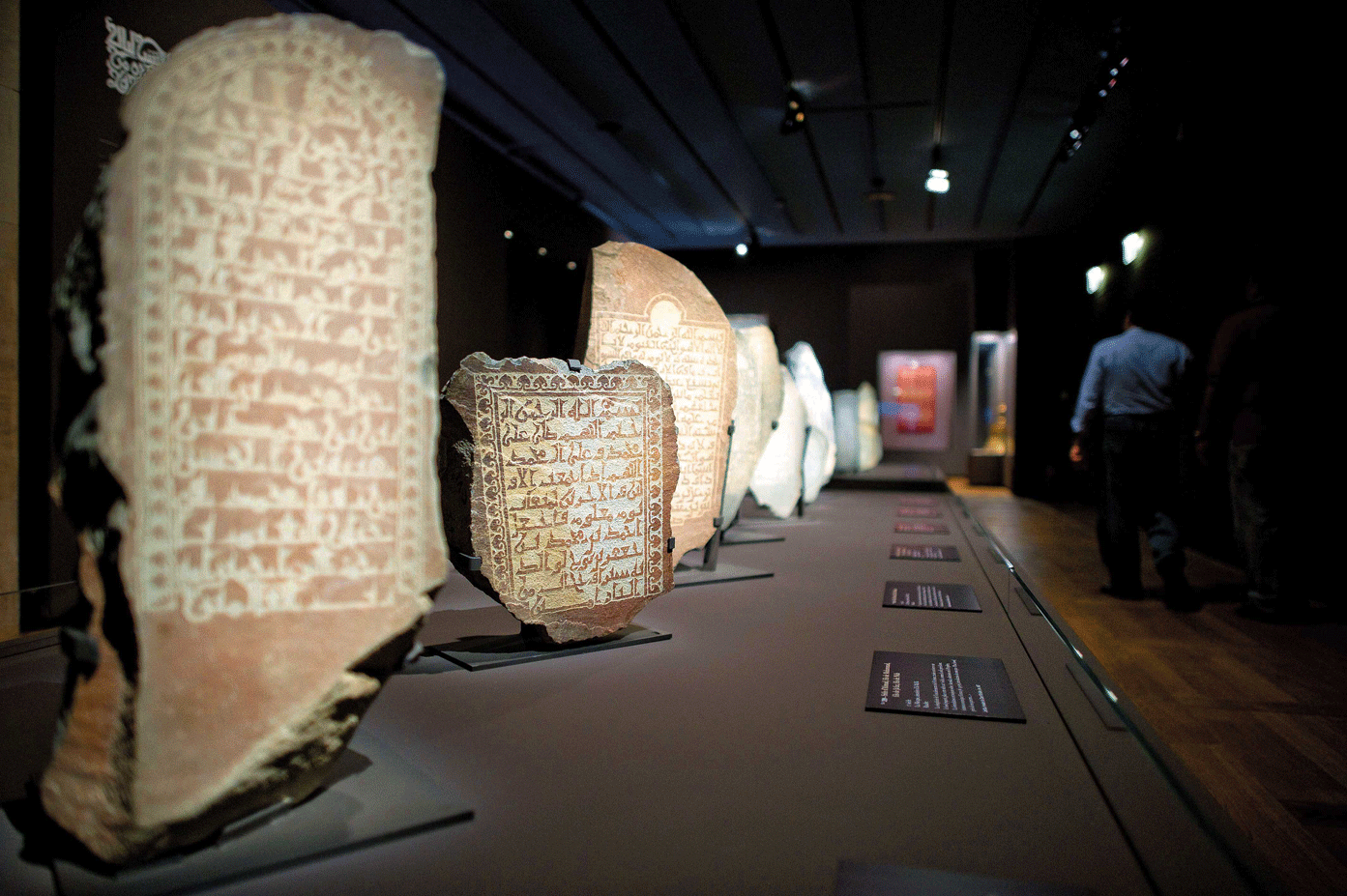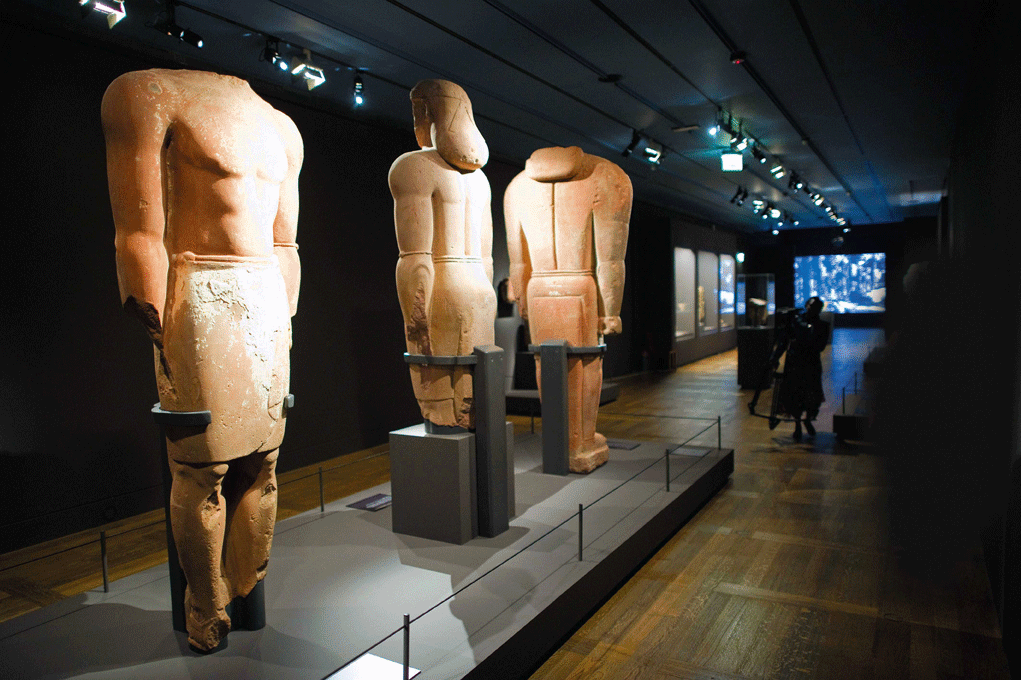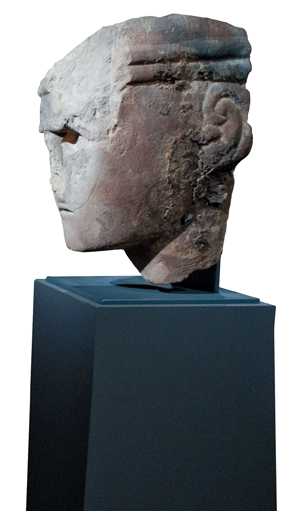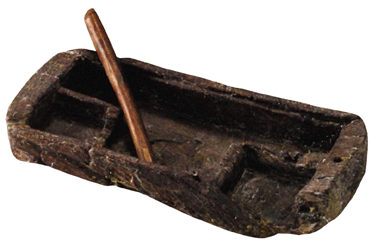

Reflections of Ancient Arabia
Journey through a Glorious Past
 |
A collection of priceless pre-Islamic and Islamic relics
are on display at the famed Louvre Museum in Paris.
It’s a good time to be in Paris. Running parallel to the city’s iconic Eiffel Tower and Arc de Triomphe are more than 300 rare treasures from pre-historic Arabia on display, giving a deep insight into the amazing archaeology and rich culture of the vast peninsula.
Called the “Road of Arabia: Archaeology and History of the Kingdom of Saudi Arabia,” the exhibition offers a journey through ancient Arabia with a range of artifacts, some dating back to prehistoric times. The works, which will be on display till September 27, are mostly from the National Museum in Riyadh, the Archaeological Museum at King Saud University and other local museums.
The Louvre Museum describes the collection as a revelation of “the little-known past of a dazzling, prosperous Arabic world now being gradually discovered by archaeologists. Moving Neolithic funerary stelae, colossal statues of the kings of Lihyan (6th – 4th century BC), and silver tableware and precious jewelry placed in tombs testify to the dynamism of this civilization.
“Despite a hostile natural environment, the inhabitants succeeded in taking advantage of their country’s geographical situation as a crossing point for the roads linking the shores of the Indian Ocean and the horn of Africa to Egypt, Mesopotamia, and the Mediterranean world. Early in the first millennium BC this trans-Arabian trade flourished, bringing prosperity to the caravan cities and permeating the local culture with new fashions and ideas from the great neighboring empires.”
A section of the exhibition highlights the role of Arabia as the cradle of Islam. One group of exhibits evokes the pilgrim paths – the roads became crowded with pilgrims as well as traders. Following this road as far as Makkah, another group comprises a selection of funerary stelae illustrating the evolution of writing and ornamentation between the 10th and 16th century and providing precious information on Makkah’s society at the time.
The oldest artifact on display is a stone tool found in the northern regions of Saudi Arabia dating back to around a million years. The exhibits include a range of historical gems, an anthropomorphic stele with a human face cut from a slab of stone from the fourth millennium BC, and a piece of a painted mural representing a man’s head from the ancient Saudi city of Qaryat Al-Faw.
Several red sandstone statues, representing the rulers of the ancient Arabian kingdom of Lihyan, were restored by Louvre after they were discovered in the northwest of Saudi Arabia. Archaeological discoveries were also made in the eastern parts of the country. These include a first century AD tomb of a little girl adorning a mask of gold and jewelry, seen with a section of an ornate funeral bed.
The Louvre catalogue on the exhibition speaks of archeologists unearthing evidence of mosques, housing, workshops, markets, a cemetery, water tanks and wells from different locations of the peninsula. The buildings consisted of mud-brick walls with foundations of stone, and the interiors plastered.
“The finds at Al-Rabadha are comparable to those at major sites in the Middle East such as Samarra, Susa and Siraf, which have established a picture of ceramic production during the early Islamic period. They attest to the importation into the peninsula by merchants and pilgrims of types of Iraqi ceramics such as opaque earthenware with cobalt blue and luster painted decoration,” the catalogue explains.
Pieces of ceramics, and other items recovered from Al-Rabadha, are displayed at the exhibition.
The exhibition looks at the last attempt made to lay out the Hijaz Railway, which was to be a pilgrimage road, and the birth of the Kingdom of Saudi Arabia. It also showcases a gold-plated door of the Kaaba, which has been preserved since it was replaced in 1940.
The exhibition devotes its concluding section to King Abdulaziz, the founder of the Kingdom, who sowed the seeds of modern Saudi Arabia. His overcoat and sword are on display.
Prince Sultan bin Salman bin Abdulaziz, President of the Supreme Commission for Tourism and Antiquities, emphasizes the importance of the message sent by this exhibition about Saudi Arabia to the world.
It reflects the Kingdom’s cultural potential and how it nurtured a number of civilizations and was an important political and economic center during different historical periods.
Being the first ever instance for such a collection to be displayed, it is a rare opportunity for Parisians and tourists to see Arabia as never before. In fact, the works on display are so rare that they have never been seen anywhere else in the world or in Saudi Arabia itself. With plans for the exhibition to move on to the US, Spain and other European countries, the world is set for an exceptional cultural treat. As Prince Sultan says, the exhibition is Saudi Arabia’s gift to the whole world.